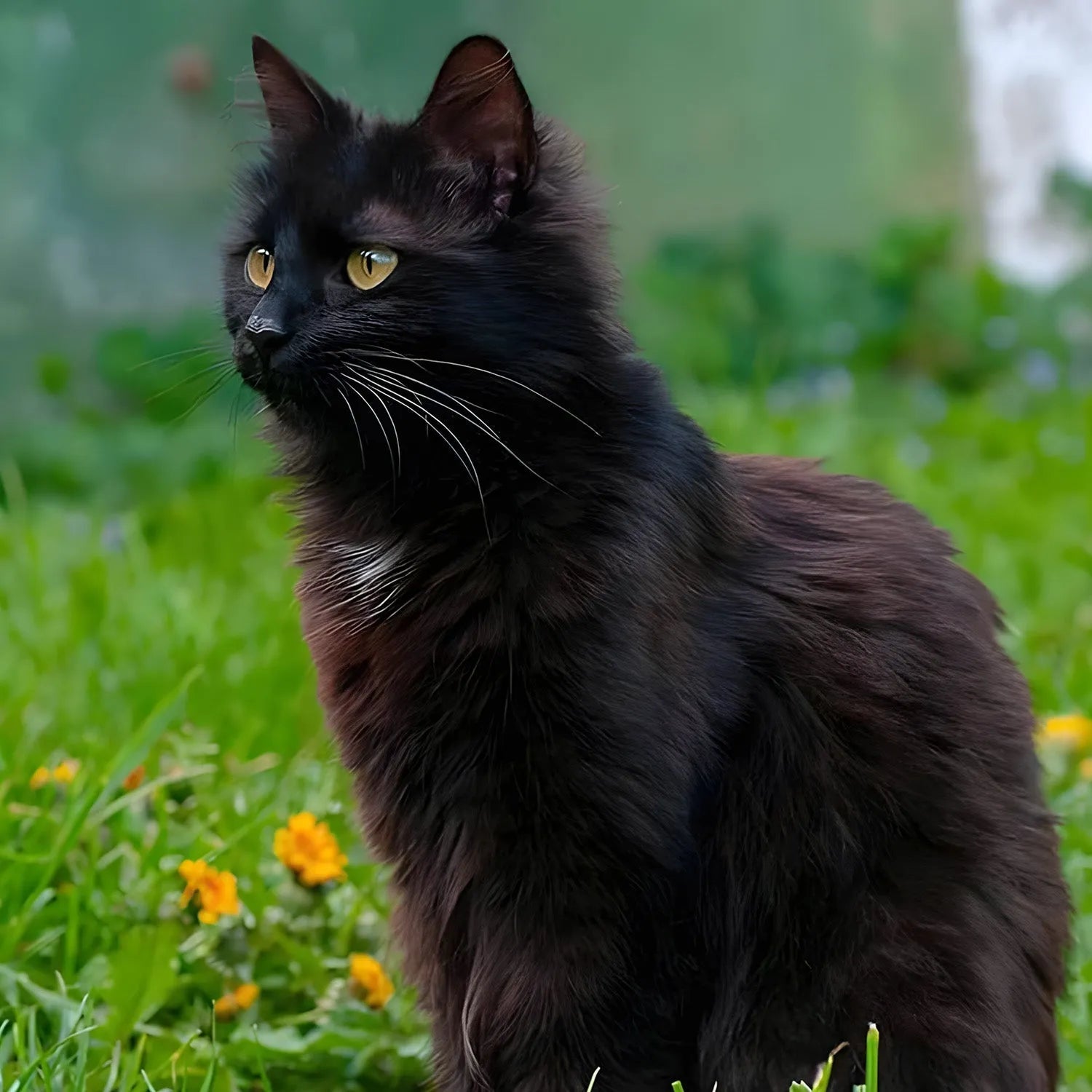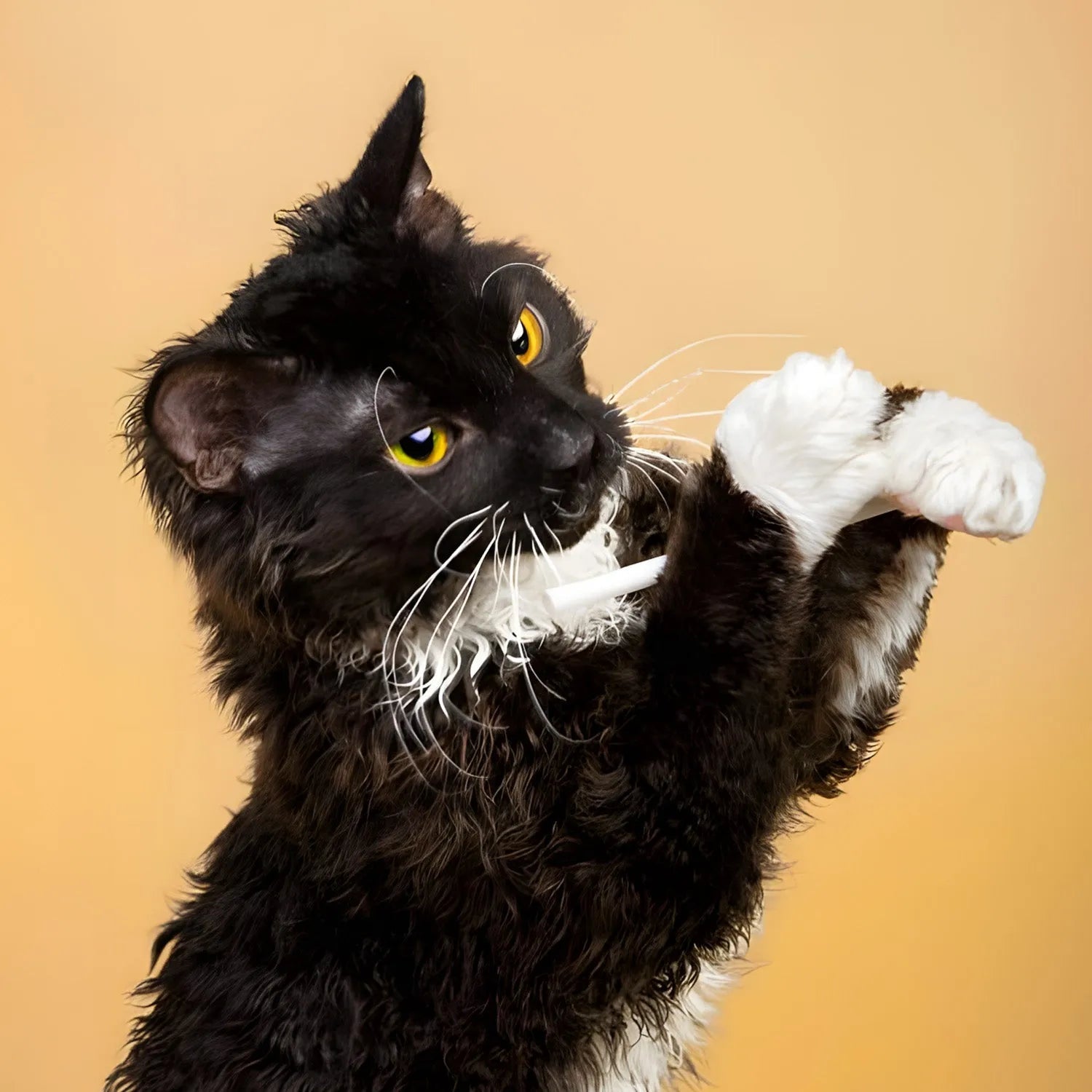Siamese: The Elegant and Vocal Companion
Introduction
The Siamese is one of the world’s most recognizable cat breeds, known for its striking blue eyes, sleek body, and vocal personality. Originating from Thailand (formerly Siam), these cats have captured the hearts of cat lovers with their affectionate, playful, and social nature. Siamese cats are incredibly interactive, often engaging in "conversations" with their owners through their distinctive and loud meows. Their combination of elegance and personality makes them an ideal choice for families, singles, and seniors alike. In this blog, we’ll explore the Siamese cat’s lifestyle, behavior, grooming needs, and how it interacts with humans and other pets.
Ratings (1-5)
-
Environmental Adaptability: 4
-
Food Consumption: 4
-
Need for Companionship: 5
-
Trainability: 5
-
Tolerance of Children: 5
-
Ease of Domestication: 5
History and Origins
The Siamese cat originated in Thailand, formerly known as Siam, where it was a revered and sacred breed. These cats were highly regarded in royal families and temples, and their striking looks made them a symbol of status. Siamese cats first made their way to the West in the late 1800s, and they quickly gained popularity for their distinctive appearance and engaging personality.
The breed was recognized in the U.S. in the early 1900s, and over time, Siamese cats have become one of the most popular and recognizable breeds in the world. Their almond-shaped blue eyes, large ears, and sleek, short coat make them stand out, but it’s their lively and vocal personality that has made them a favorite among cat lovers.
Physical Characteristics and Colors
Siamese cats are medium-sized, elegant cats with long, slender bodies, fine-boned legs, and a sleek, graceful appearance. Their heads are wedge-shaped, with large, pointed ears and stunning almond-shaped blue eyes that give them an exotic and alert expression.
The Siamese is known for its distinctive color pattern, referred to as "color points," where the fur on their ears, face, paws, and tail is darker than the rest of their body. This color contrast is the result of a temperature-sensitive gene that causes the cooler areas of the body to develop darker fur. The traditional Siamese color points include:
-
Seal Point: Dark brown points with a pale cream or fawn body.
-
Blue Point: Grayish-blue points with a bluish-white body.
-
Chocolate Point: Light brown points with an ivory-colored body.
-
Lilac Point: Frosty gray points with a pale, almost white body.
Modern Siamese cats tend to have a very sleek, long appearance, while traditional Siamese, also known as "Applehead" Siamese, have a rounder face and more robust body.
Lifestyle and Behavior
Siamese cats are incredibly social, active, and vocal. They are known for their strong personalities and their love of interacting with their human companions. Siamese cats will often "talk" to their owners, engaging in loud conversations with a range of meows, trills, and other vocalizations. These cats thrive on attention and are not shy about letting their owners know when they want to play or be petted.
Siamese cats are highly energetic and enjoy playtime, climbing, and exploring. They are curious by nature and need plenty of mental and physical stimulation to stay happy. These cats love interactive toys, climbing trees, and puzzle feeders that challenge their minds. Despite their energetic nature, Siamese cats are also affectionate and will happily curl up next to their owners for some quality cuddle time.
Because of their social nature, Siamese cats do not like to be left alone for long periods. They can become lonely or bored if they don’t have enough interaction, so they do best in homes where someone is around for much of the day or where they have other pets to keep them company.
Trainability and Intelligence
Siamese cats are highly intelligent and can be trained to follow commands, perform tricks, and even walk on a leash. They are quick learners and respond well to positive reinforcement techniques such as treats and praise. Because they enjoy mental stimulation, training sessions that challenge their intelligence and curiosity are especially rewarding for Siamese cats.
These cats are also known for their problem-solving skills and can often figure out how to open doors, cabinets, or find hidden treats. Owners should be prepared for their Siamese cat’s clever antics and provide plenty of toys and activities to keep them engaged.
Training sessions with Siamese cats should be fun and interactive. These cats enjoy learning new tricks and games, and they thrive on the attention and mental stimulation that training provides.
Social Behavior and Human Interaction
Siamese cats are some of the most social and affectionate cats you can find. They love being around people and are happiest when they can be near their human family members. Siamese cats are known for their strong bonds with their owners, and they often follow their humans from room to room, curious about everything going on in the household.
These cats are affectionate and enjoy being petted and held, although they are not always "lap cats" in the traditional sense. They prefer being near their owners, sitting beside them on the couch or sleeping at the foot of the bed. Siamese cats are also known for their vocal expressions of love, and they will often "talk" to their owners, telling them all about their day in loud meows and trills.
While Siamese cats love attention, they are also independent enough to entertain themselves for short periods, provided they have toys, cat trees, or puzzles to keep them busy.
Compatibility with Children and Other Pets
Siamese cats are excellent companions for children due to their playful and tolerant nature. They enjoy interactive play and are generally patient with children’s antics, provided they are treated with respect. Their energetic and social personalities make them fun companions for kids who enjoy playing with toys or engaging in games like fetch.
In addition to being great with children, Siamese cats also tend to get along well with other pets, including dogs. Their confident and friendly nature allows them to integrate well into multi-pet households, and they often enjoy the company of other animals as much as they do humans. Proper introductions are important, but Siamese cats are usually accepting of new furry family members, especially if they can engage in play with them.
Grooming and Care
The grooming needs of a Siamese cat are minimal due to their short, sleek coat. Weekly brushing is usually sufficient to remove loose hairs and keep their coat looking shiny and healthy. Because their fur is short and lies close to the body, Siamese cats are not prone to matting or excessive shedding, making them a low-maintenance choice for pet owners.
In addition to regular brushing, Siamese cats require routine dental care, ear cleaning, and nail trimming to maintain their overall health. Their low-maintenance grooming needs make them an easy breed to care for, but they still appreciate the attention and affection that comes with grooming sessions.
Health and Lifespan
Siamese cats are generally healthy, but like all breeds, they can be prone to certain genetic conditions. Some common health issues associated with the breed include progressive retinal atrophy (PRA), a condition that affects their eyesight, and respiratory issues due to their elongated heads. Responsible breeders screen for these conditions to reduce the risk of passing them on to future generations.
Regular veterinary check-ups, a balanced diet, and maintaining a healthy weight are essential to keeping your Siamese cat in good health. With proper care, Siamese cats typically live 12-15 years or more, making them long-term companions for any family.
Environmental Adaptability
Siamese cats are adaptable and can thrive in a variety of living environments, whether in a small apartment or a larger home. They are particularly well-suited to indoor living, where they can enjoy a calm and predictable routine. Siamese cats are social creatures, so they do best in homes where they have plenty of interaction with their human family members or other pets.
Because of their energetic and curious nature, Siamese cats appreciate having access to climbing trees, interactive toys, and plenty of opportunities for play. While they can adapt to most living situations, they are happiest in environments where they receive plenty of attention and stimulation.
Feeding Requirements
A balanced diet is crucial for maintaining the health and energy levels of Siamese cats. High-quality cat food that is rich in protein is recommended to support their muscular build and overall well-being. Fresh water should always be available. Because Siamese cats are active and energetic, it’s important to monitor their food intake to ensure they are receiving the proper nutrition to support their activity levels.
Consult your veterinarian for specific dietary recommendations based on your cat's age, weight, and health needs. Regular play sessions and activities that encourage physical movement can also help keep your Siamese cat
healthy and fit.
Conclusion
The Siamese cat is a graceful and intelligent breed that offers endless companionship, conversation, and play. Their strong bonds with their human companions, combined with their vocal and social personalities, make them wonderful pets for families, individuals, or anyone looking for a loving and interactive cat. If you're searching for a chatty, affectionate feline friend that will keep you entertained and loved, the Siamese is an ideal choice.
For more information about other cat breeds and pet care tips, stay tuned to our blog!
References:
-
Johnson, S. (2021). "The Elegant and Social Siamese Cat." *Journal of Feline Studies*, 35(3), 215-230.
-
Thompson, A. (2020). "Caring for Your Siamese: A Comprehensive Guide." *Cat Lover’s Magazine*, July issue, pp. 25-33.
-
Harris, E. (2019). "Health and Wellness in Siamese Cats." *Veterinary Journal*, 79(2), 123-137.


